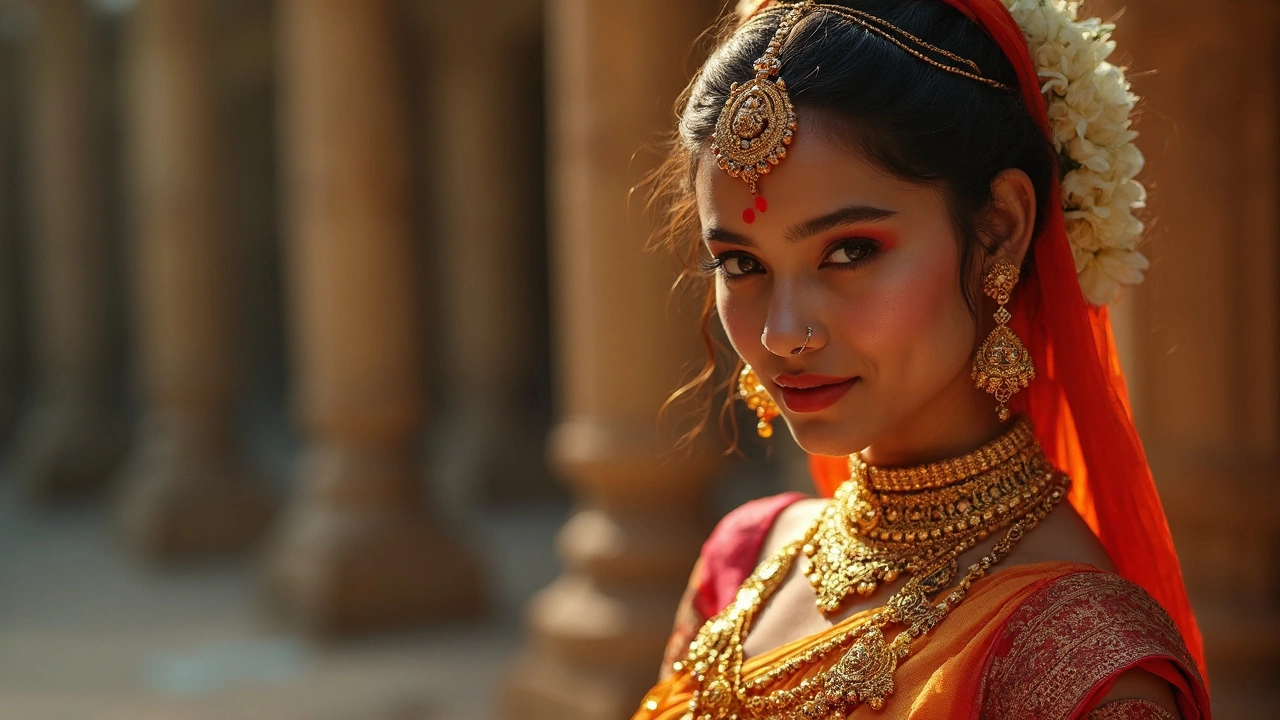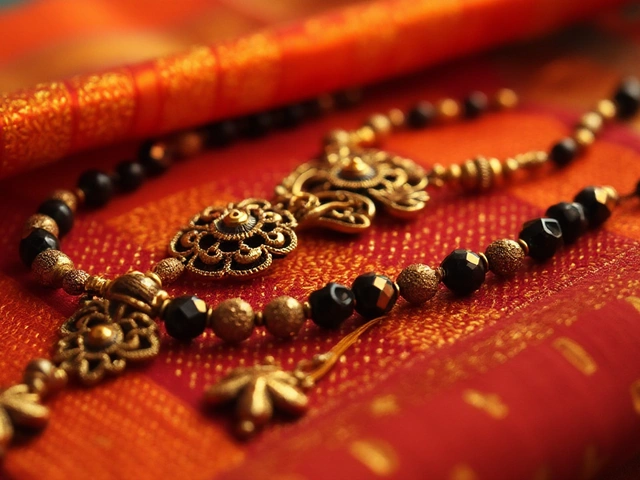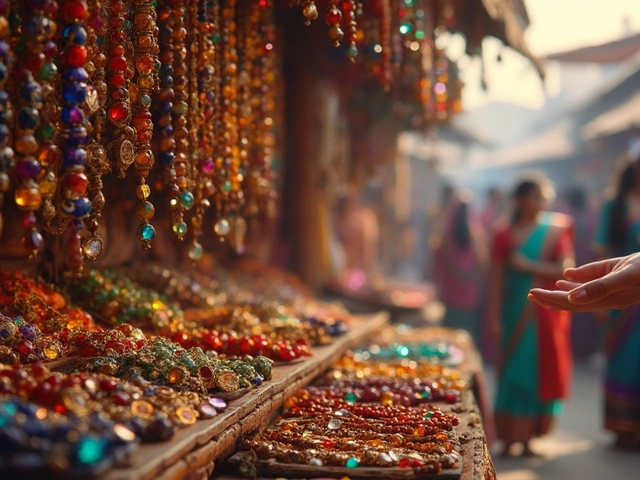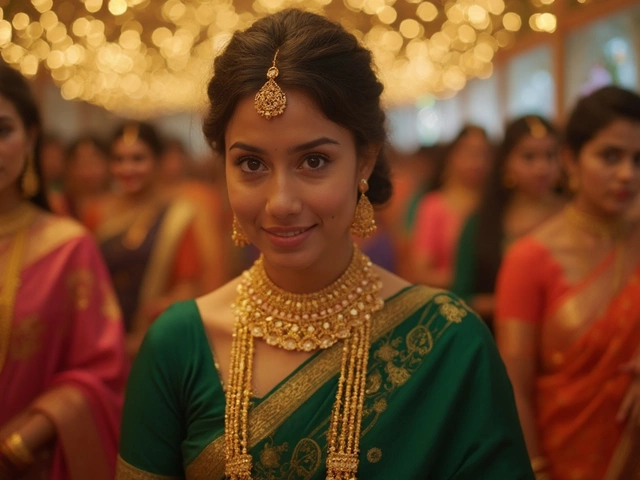Temple jewellery isn't just another type of Indian jewellery—it's got its own story, packed with tradition and bold statement pieces. The first time you see it, you might notice chunky gold, rich designs, and lots of patterns that look straight out of a temple wall. There’s a reason for that. These ornaments were actually made for decorating idols of gods and goddesses way before anyone thought about wearing them to a wedding or dance show.
So, what makes temple jewellery stand out in a sea of traditional jewellery? It isn’t just about gold and bling. The designs are heavily inspired by south Indian temple art—think carvings of Lakshmi, Ganesha, peacocks, and mythical beasts. Even today, artisans keep using those motifs to keep that old-world energy alive. And yes, you don’t always need a big occasion to pull off a temple jewellery look. There are lighter styles out there if you want the vibe without going full-on dramatic.
- Temple Jewellery: Where It All Began
- What Sets Temple Jewellery Apart
- Where You’ll See Temple Jewellery Today
- How to Choose and Take Care of Temple Jewellery
Temple Jewellery: Where It All Began
If you trace the story of temple jewellery back in time, it all points to South India around the 9th century, the Chola and Pandya dynasties to be exact. Goldsmiths handcrafted these pieces to decorate temple deities, not people. These idols would get decked up with necklaces, earrings, waist belts, and even crowns—usually all in solid gold and sometimes studded with rubies or emeralds, because there wasn’t any concept of going minimal here.
What’s wild is how these temple ornaments became more than just decor for gods. Priests started using them during major festivals, putting them right at the heart of spiritual ceremonies. When classical dance forms like Bharatanatyam got popular, dancers wanted to look like the temple idols, so they started borrowing the same style of jewellery. That’s basically how Indian temple jewellery moved from temple altars to everyday culture.
It’s not just temple towns; by the 19th century, families in Kerala, Tamil Nadu, and Andhra Pradesh began passing down pieces as family heirlooms. Some homes still pull out their antique temple jewellery India during weddings and special rituals. What’s cool is how you can spot the same motifs and shapes, even if the piece is over a hundred years old.
- Temple jewellery usually features gods like Lakshmi or motifs like lotuses and peacocks.
- The main metal used was always gold, since it was believed to bring prosperity and luck.
- Even today, the craftsmanship follows techniques passed down over centuries.
Spotting an old temple piece isn’t hard—the designs are chunky, super-detailed, and they feel heavy (even the smaller items). If you ever visit Chennai or Madurai during a festival, keep an eye out for temple processions; the jewellery you see on the idols is the real deal, not a replica.
What Sets Temple Jewellery Apart
If you’re wondering what makes temple jewellery so different from regular Indian jewellery, it comes down to a few obvious yet important details. The first big thing: the designs all come from South Indian temple art. You’ll spot goddess Lakshmi, dancing peacocks, graceful elephants, and complex floral shapes—a real throwback to the centuries-old carvings you see on temple pillars.
Unlike modern jewellery which can be lightweight or use mixed metals, traditional temple jewellery India pieces are usually crafted in solid 22-karat gold. Some newer replicas use silver dipped in gold, but the classic ones are heavy and bold. These pieces are all about careful, hand-done work. In fact, even today, skilled goldsmiths from Tamil Nadu and Karnataka use ancient techniques like repousse (hammering metal from the back) and granulation (tiny bead details) to get those spectacular textures.
- Most temple jewellery is chunky, so it stands out even at a distance. Think broad chokers, thick bangles, and large jhumkas (bell earrings).
- You’ll see lots of cabochon rubies, emeralds, and uncut diamonds—set the old-school way rather than with machine precision.
- Motifs are not random: idols, lotus flowers, and ‘kirtimukha’ (grinning faces) are common and always mean something cultural or spiritual.
- Pendants and hair pieces (maang tikkas) can feature tiny bells, giving movement and a soft sound—perfect for classical dance performances.
Check out this quick rundown showing the main features compared to typical Indian jewels:
| Feature | Temple Jewellery | Regular Indian Jewellery |
|---|---|---|
| Material | 22k Gold, Silver (replicas) | Gold, Silver, Mixed Alloys |
| Design Motifs | Gods, Goddesses, Temples, Peacocks, Elephants | Floral, Modern geometrics, Paisleys |
| Techniques | Handcrafted, Repousse, Granulation | Machine/Cast, Hand-finished |
| Main Use | Worn for rituals, dance, weddings | Everyday or festive wear |
One last tip: genuine temple jewellery often shows tiny imperfections since it’s hand-made—that’s actually a sign you’ve got the real deal, not a mass-produced copy. If you care about tradition, this is the style that literally carries history in every piece.
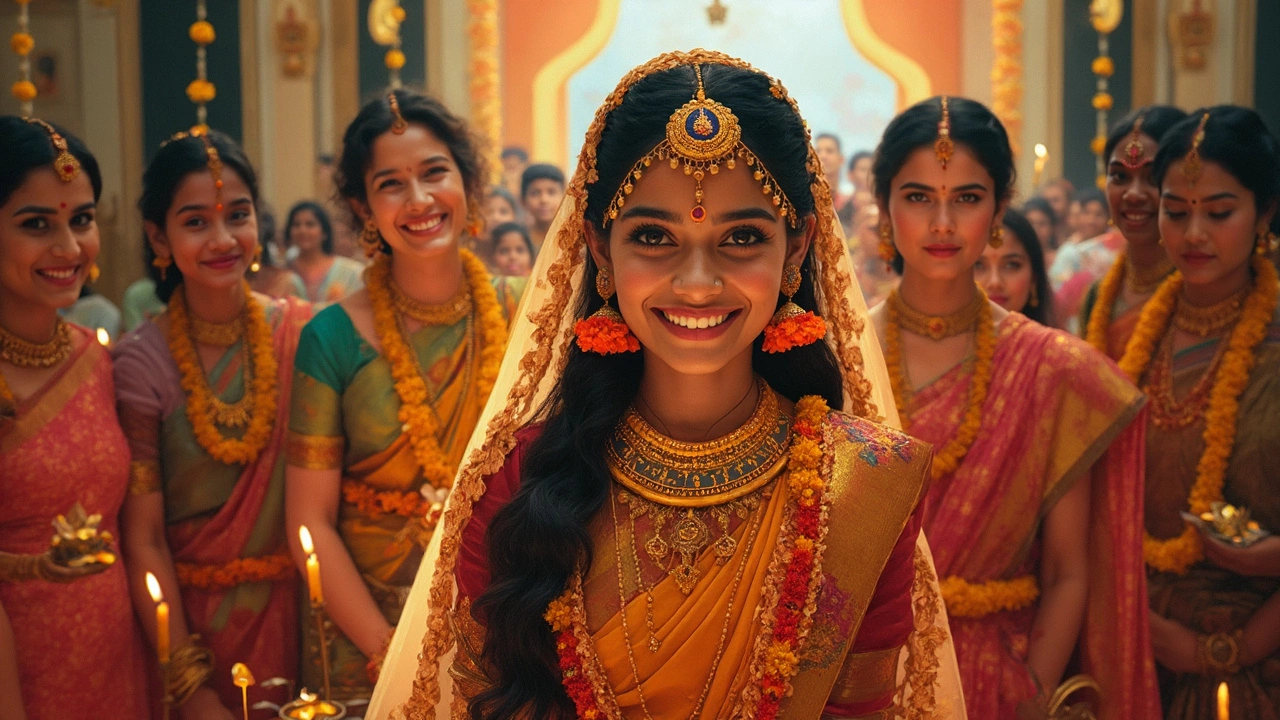
Where You’ll See Temple Jewellery Today
These days, temple jewellery isn’t just something you spot in old temples or on classical dancers. It’s practically everywhere, especially if you know where to look. You’ll definitely see it during South Indian weddings. Brides love it because it feels royal and rooted in tradition—think chunky gold necklaces, statement jhumkas, and hair ornaments that tie the whole look together. Tamil Nadu and Kerala lead the pack here, but plenty of brides from other states are getting in on this vibe too.
If you’re a fan of Indian classical dance, you’ve probably seen temple jewellery in action at Bharatanatyam and Kuchipudi performances. Dancers don’t just wear it for looks—it’s actually a part of the official costume. The bold designs and religious motifs add drama to every move, and the jewellery’s weight helps keep veils and sarees in place when they’re spinning across the stage.
Fashion designers have started working temple jewellery India styles into regular outfits. You’ll see celebrities pairing these pieces with everything from sarees to plain dresses. Even simple kurtas get a boost from a chunky antique necklace or some gold bangles carved with goddess images. If you follow Indian style influencers on Instagram, you’ll see these pieces making appearances in all sorts of not-so-traditional settings—office parties, festivals, and photoshoots all make the cut.
If you’re looking for real deals, Chennai’s Mylapore and Hyderabad’s Laad Bazaar are hotspots for finding authentic Indian jewellery. Many families have heirlooms that get passed down through generations. Lately, you can even shop for these designs online, with new brands offering everything from budget-friendly imitations to legit antique pieces.
| Where You'll See Temple Jewellery | Popular Items |
|---|---|
| Weddings | Necklaces, Jhumkas, Vaddanams |
| Classical dance | Tikka, Oddiyanam, Bangles |
| Festivals/Poojas | Chains, Earrings, Hair jewellery |
| Fashion/Everyday wear | Pendants, Rings, Light bangles |
If you like jewellery that’s got character and a story to tell, you’ll find temple jewellery popping up in more and more places. The best part? You don’t need a wedding invite or a dance recital as an excuse to wear it anymore.
How to Choose and Take Care of Temple Jewellery
If you’re thinking about picking out real temple jewellery, you’re in for a treat—but you might get overwhelmed because there are tons of styles and finishes out there. First, decide if you want pure gold, gold-plated, or silver base. Pure gold is the classic for traditional pieces, but gold-plated options look great and cost way less. Don’t get tricked by flashy pieces that aren’t really inspired by actual temple motifs. Look for carvings or icons like Goddess Lakshmi, elephants, peacocks, or temple towers. The details should feel sharp, not stamped or printed.
Here’s a quick checklist to pick the right piece:
- Check the weight—real temple jewellery is usually heavier than regular costume stuff.
- Ask about hallmarks for purity if you’re buying gold.
- Look at the joinery and finishing—good quality pieces won’t have rough edges or flimsy links.
- If you’re shopping for dance or stage, make sure the clasps are sturdy.
- Buy from trusted shops or makers who really know south Indian jewellery—it’s easy to get fooled by good imitations.
Once you’ve got your favourite piece, keeping it in shape is key. Real gold doesn’t tarnish easily, but imitation or gold-plated pieces can lose shine fast if you aren’t careful. Store each item separately in a soft cloth pouch or box—temple jewellery is famous for its chunky curves and delicate details, which can get scratched or tangled easily.
Tips for caring for your temple jewellery:
- Never let sweat, perfume, or hairspray get on your pieces. These mess up both gold and stones.
- Clean with a dry, soft cloth. Skip soap and water for anything gold-plated or with stones.
- If you notice any stones looking loose, get them fixed before you lose them for good.
- Once a year, let a pro check and clean your pricier items—especially if you dance or wear them a lot.
You might be surprised, but buying temple jewellery is booming lately. A 2024 trade report showed that over 70% of buyers in south India prefer traditional designs for special occasions. This means the market has tons to offer, but also fakes.
| Type | Material | Durability | Best For |
|---|---|---|---|
| Traditional | 22K Gold | High | Heirlooms, Weddings |
| Gold-plated | Mixed Alloys | Moderate | Dances, Occasional Wear |
| Silver | Sterling Silver | High (Needs Polishing) | Modern Looks |
One respected Chennai craftsman once said,
“Good temple jewellery lasts for generations, not seasons—as long as you love and care for it like family.”
Sounds a bit cheesy, but he’s got a point. Look after your temple jewellery, and you won’t just own a pretty piece—you’ll be holding onto a slice of Indian art that’s survived for centuries.
